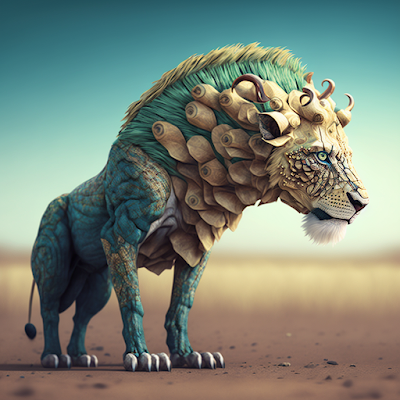Book Preview: Bioinspired System Design
T. T. Eapen and D. J. Finkenstadt
This book introduces a new bioinspired model for designing organizational systems by drawing on natural analogies to improve survivability. The goal of this book is to provide organizations with the tools they need to understand the design of living systems and use the lessons to improve their ability to respond to uncertainty in dynamic and challenging environments.
The Cameleot: Home Bioinspired by the Lion, Camel, and the Chameleon
Cameleot is a concept house that takes inspiration from three animals: the lion, the camel, and the chameleon. These animals were deliberately chosen for their unique characteristics that represent the three core survival-related capabilities of any living system: efficiency, resilience, and prominence or the ERP factors.
The lion, known for its powerful and efficient hunting tactics, represents efficiency in the management of resources. The camel, known for its ability to survive in harsh desert environments, represents resilience in the face of extreme forces. And finally, the chameleon, known for its ability to change color and blend in with its surroundings, represents prominence in the ability to attract or evade attention. These qualities are combined in the gryphonic creature that we call the Cameleon.
The Cameleot house is designed to embody these capabilities. It is built to minimize waste of resources, to withstand the effects of extreme weather, and to change its appearance to both attract and remain inconspicuous if necessary. The concept designs for Cameleot were generated using text-to-image models based on descriptions of its bioinspiration.
The Cameleot is a unique and innovative architectural design that incorporates various sustainable features to create a harmonious blend with the surrounding environment. One of its most striking features is the mirrored surfaces that reflect the natural surroundings, creating a seamless integration between the building and its environment. Additionally, the use of green materials, such as plants and other sustainable materials, helps to further blend the building with its surroundings.
Another notable feature of the Cameleot is its use of solar energy. The building is equipped with a solar panel array that has been designed to resemble the mane of a lion. This not only adds an aesthetic element to the building but also serves a functional purpose by harnessing solar energy to power the building's systems. The panels are connected to create an image of a lion's mane, making this unique building even more eye-catching and memorable. The Cameleot is designed to be an archetype of sustainable architecture that seamlessly integrates with its environment while also providing a visually striking and unique design.
The Cameleot concept house demonstrates the potential of bioinspired design in the design ideation process for sustainable and adaptive structures that can efficiently manage resources, withstand extreme forces, and adapt to changing environments.
Image: The Squirrel's Dilemma
Image: The Efficient Cheetah
Image: The Resilient Camel
Image: Prominence Displays of the Cephalapods
Image: The Gaping Shark and Efficiency-Prominence Tradeoff
The book demonstrates that the same three capabilities that are essential for the survival of living organisms in harsh environments - efficiency, resilience, and prominence, or ERP factors - are also critical for organizations facing their own challenging environments.







